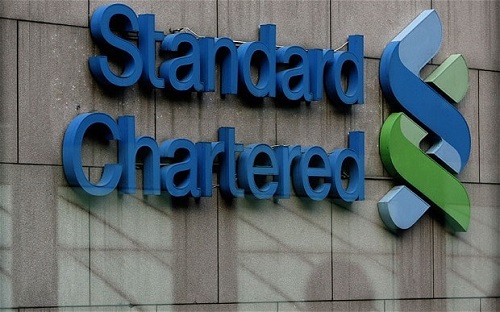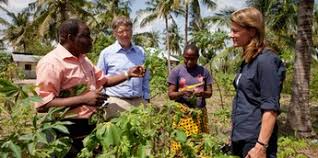- Cautious Lending, Bigger Investments Anchor StanChart Ghana’s 2025 H1 Results
In the first six months of 2025, Standard Chartered Bank Ghana PLC showed how a combination of discipline and adaptability can sustain performance in an uncertain banking environment. While the bank earned slightly less from its core lending business, it compensated with tight cost controls, stronger deposit mobilisation, and a bigger investment portfolio, ultimately growing its net profit to GH¢322 million, about 6% higher than the same period in 2024.
This result highlights how banks in Ghana are shifting strategies to survive a market reshaped by interest rate fluctuations, regulatory pressures, and a fragile post-debt-restructuring recovery.
Breaking Down the Numbers in Simple Terms
- The Profit Story
At its core, a bank earns money from two things:
- Interest on loans it gives to customers, and
- Fees and trading income from services and foreign exchange dealings.
For the half-year ending June 30, 2025:
- Net interest income (money earned from loans minus interest paid on deposits) fell by GH¢32 million to GH¢535 million.
Why? Because interest rates have eased slightly, and the bank is lending cautiously, meaning less interest is coming in. - Fee and commission income remained stable at GH¢128 million, showing that account charges, transfers, and service fees are still a reliable earner.
- Trading income rose 8% to GH¢111 million, as the bank capitalised on foreign exchange trading opportunities in a volatile currency market.
Even though profit before tax dipped slightly to GH¢417 million, lower expenses and taxes allowed net profit to climb to GH¢322 million.
In simpler terms:
The bank made less from loans but saved money elsewhere, ensuring that the final profit grew.
- Expense Discipline: Spending Less to Earn More
Banks, like households, need to control spending to keep profits up. Standard Chartered Ghana cut its operating expenses by 9%, dropping from GH¢669 million to GH¢611 million.
- Personnel costs were flat at GH¢286 million, suggesting no major layoffs but controlled wage growth.
- Other operating expenses, covering everything from IT systems to rent and branch operations, fell by GH¢44.5 million, a sign of efficiency gains.
- Depreciation also fell slightly, meaning fewer new assets were written down.
Takeaway for the everyday reader:
The bank became leaner and more efficient, which is why profit grew despite pressure on loan income.
- Balance Sheet: What the Bank Owns and Owes
Standard Chartered Ghana’s total assets jumped to GH¢11.93 billion, up 16% year-on-year. This is the size of the bank’s financial muscle, covering everything it owns (cash, loans, investments) and owes (customer deposits, borrowings).
Key highlights:
- Customer deposits surged 21% to GH¢10.84 billion, showing more individuals and businesses trust the bank to hold their money.
- Loans to customers stayed flat at GH¢3.13 billion, signaling caution in lending amid economic uncertainty.
- Investment securities soared 40% to GH¢5.75 billion, reflecting a shift to safer assets like government bonds to protect the bank’s funds.
- Cash balances with the central bank doubled, strengthening liquidity buffers.
For a layman:
Think of the bank as a savings box. It took in a lot more deposits but lent out carefully, preferring to park money in safer investments.
- Shareholder Value and Capital Strength
Even with cautious lending, the bank’s shareholders continue to see value:
- Net assets per share rose to GH¢8.33 (up from GH¢7.58).
- Earnings per share also improved to GH¢2.67, meaning each share is earning more profit.
This reflects a strong capital position and ability to withstand shocks, which is critical after Ghana’s recent banking sector cleanup and sovereign debt challenges.
- Cash Flow: Money In vs. Money Out
Cash flow tells us whether the bank’s money movement is healthy:
- Net cash from operations hit GH¢644 million, a solid inflow from its daily business.
- Investing activities led to a minor cash outflow, mainly due to purchasing and selling investment securities.
- Financing outflows were modest, reflecting lease payments and dividend payouts.
In plain language, we can report on NorvanReports that the bank generated more cash than it spent, which keeps it liquid and prepared for lending or shocks. See tables we have put together below.
Income Statement Highlights (GH¢’000)
| Metric | HY 2025 | HY 2024 |
| Operating Income | 939,259 | 937,076 |
| Net Interest Income | 535,013 | 567,021 |
| Fee & Commission Income | 127,564 | 127,554 |
| Trading Income | 110,808 | 102,856 |
| Total Operating Expenses | 610,617 | 668,959 |
| Profit Before Tax | 417,042 | 424,916 |
| Profit After Tax | 322,097 | 304,295 |
Balance Sheet Highlights (GH¢’000)
| Metric | HY 2025 | HY 2024 |
| Total Assets | 11,927,633 | 10,305,390 |
| Customer Deposits | 10,838,256 | 8,962,006 |
| Loans to Customers | 3,127,744 | 3,127,744 |
| Investment Securities | 5,752,847 | 4,096,724 |
| Total Liabilities | 11,527,633 | 9,905,390 |
| Total Equity | 400,000 | 400,000 |
Key Ratios
| Metric | HY 2025 | HY 2024 |
| Net Assets per Share (GH¢) | 8.33 | 7.58 |
| Basic EPS (GH¢) | 2.67 | 2.52 |
| YoY PAT Growth (%) | 5.85 | – |
| Cost-to-Income Ratio (%) | 65.01 | 71.39 |
The Bigger Picture: What It Means for Ghanaians
The story of Standard Chartered Ghana’s 2025 half-year results is not just for shareholders—it reflects how banks are adjusting to Ghana’s slow economic recovery:
- Banks are playing safe. Lending is flat because businesses are still recovering from high interest rates and inflation shocks.
- Deposits are growing. Ghanaians are saving more in formal banks, showing confidence in the banking system.
- Profitability is steady but under pressure. Lower interest income is a warning sign that banks may need new revenue streams beyond loans.
Financial analysts who speak to NorvanReports suggest the bank’s shift to investment securities and cost efficiency is prudent in the short term, but long-term growth depends on lending recovery.
“StanChart Ghana has shown it can defend profits in a tough year,” says a local banking analyst. “But sustained economic growth will be key to reigniting lending income.”
Standard Chartered Ghana’s half-year 2025 results tell a story of resilience and cautious optimism. By cutting costs, mobilising deposits, and safeguarding liquidity, the bank has grown profits in a challenging environment, a clear sign of strategic discipline amid economic uncertainty.







